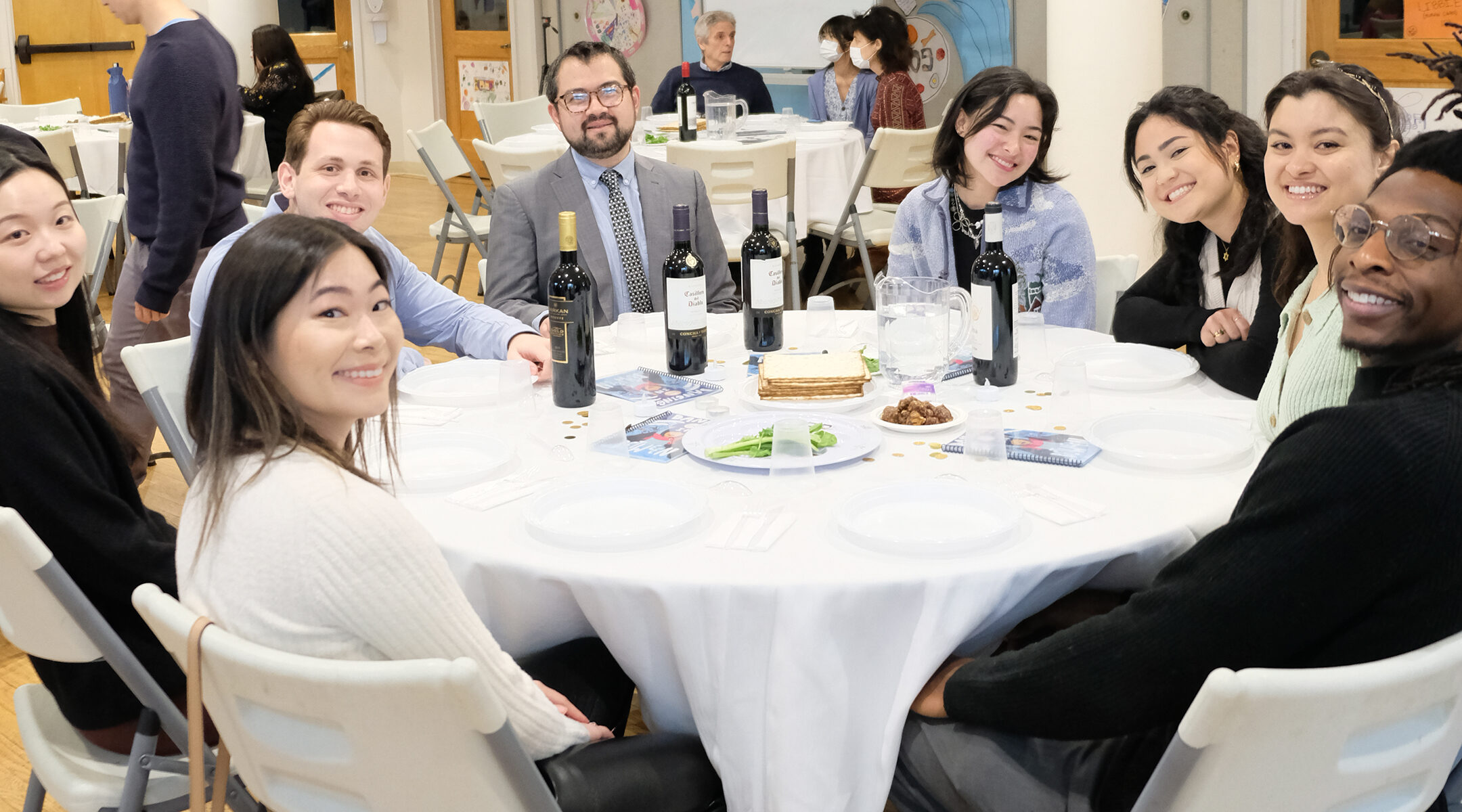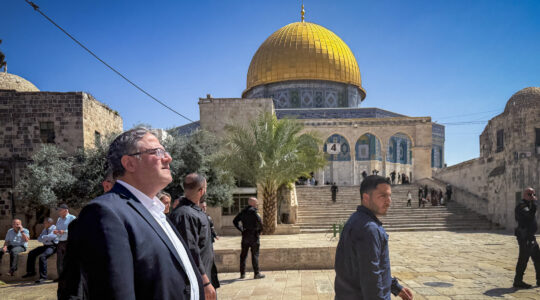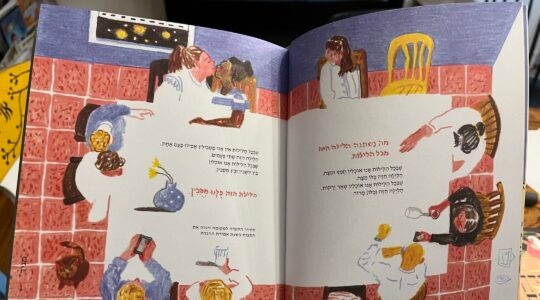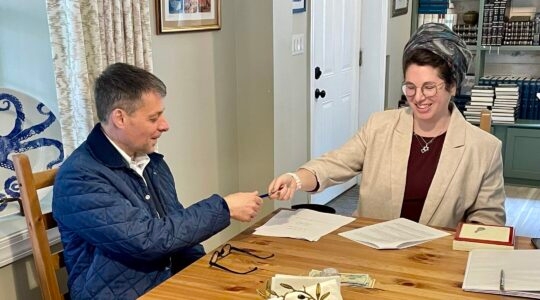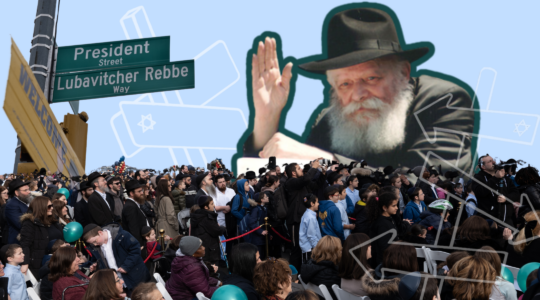This article was produced as part of JTA’s Teen Journalism Fellowship, a program that works with Jewish teens around the world to report on issues that affect their lives.
(JTA) — As a young Black Jewish adoptee, Lindsey Newman felt close to the Jewish community on the Upper West Side of Manhattan, where she grew up. Then adolescence hit and she started to feel like an outsider, struggling to find acceptance and independence at her synagogue.
It wasn’t until the end of high school that she began connecting on social media to organizations like the Jewish Multiracial Network and Be’chol Lashon to build her own connection to other Jews of color and find a sense of belonging.
Now, as the director of community engagement at Be’chol Lashon, an organization that supports Jewish diversity, Newman works to make sure other Jews of color like her feel welcomed and included in Judaism.
“Diversity is one of Judaism’s greatest assets,” said Newman. “When we even unintentionally leave out or marginalize parts of our community, we all lose.”
A 2020 study by the Pew Research Center found that 8% of American Jews said they are Black, Hispanic, Asian, other minority races or multiracial, and that 17% of U.S. Jews live in households in which at least one child or adult is Black, Hispanic, Asian, multiracial or some other non-white race or ethnicity.
But, as the Jews of Color Initiative found in its own study, only 18% out of the 1,118 Jews of color it surveyed belong to a synagogue — compared, according to another Pew study, to the 35% of all U.S. Jews who are synagogue members or have someone in their household who is a member. To address this gap, organizations and synagogues are developing programs to help Jewish teens of color feel at home.
For BBYO member Micah Pierandri, 17, the experience of being part of her local chapter in Tulsa, Oklahoma has been great. For example, she loved meeting Olympic gymnast Gabby Douglas at the youth group’s International Convention. However, Pierandri, who is African American, wanted to connect more with JOCs, so she started the Members of Color Alliance through BBYO late last fall.
The club came about after she was called slurs at a BBYO summer camp in Pennsylvania by, according to Pierandri, participants who were “a mix of people of color and not.” BBYO did not respond to requests about the incident. Pierandri said the staff handled it well enough, but that she wanted to build on her experience. “I knew that if someone wasn’t going to stand up for other MOCs within BBYO I knew I could make that change,” she said. “I fought and fought until I did and here we are.”
The 12-member group provides a space specifically for teens of color to come together and connect with others similar to them, something Pierandri didn’t see existing before. MOCA members usually meet online through Zoom to discuss racial justice, learn from speakers, play games and provide cultural exchanges. Sometimes, members just get to chill with each other. “While the club is more racial justice-based I try my best to make sure it’s still fun and everyone has an amazing time,” said Pierandri.
Pierandri was able to form MOCA through On Demand, a virtual platform of BBYO. Late last year, the youth group released a new form for BBYO members to create any type of club that they desired. “Almost within less than 24 hours I had texts from all sorts of BBYO staff telling me they have my back for MOCA and want to help me make it a reality,” Pierandri said.
One MOCA member, Morgan Rodriguez, 16, felt turned off by other organizations’ JOC groups until she found the club within BBYO. As a Latino Jew, she felt she didn’t fit the stereotype of what a JOC should look like. “It was almost disheartening to find out that an organization wouldn’t want somebody because they’re mixed [race],” said Rodriguez, who lives in Delray Beach, Florida and is a mix of Ashkenazi and Ethiopian Jewish, Liberian, Cuban, Irish and Dutch ancestry.
Fortunately, Rodriguez sees the conversation changing, something she credits to social media. As a bonus, being able to see Jews who looked like her online made her feel more comfortable in her Jewishness.
The LUNAR Collective is trying to create this same space for teen Asian American Jews. The Bay Area-based group, which started as a film project, holds events to encourage pride in Asian Americans’ identities.
Rabbi Mira Rivera, rabbi-in-residence for LUNAR and the first Philipina rabbi to be ordained at the Conservative Jewish Theological Seminary, said that when she joined synagogues after she was married, she struggled to find others to unite with. “The people I saw who looked like me were the ones I wasn’t supposed to talk to because they didn’t want to be outed [as converts] or they were the caregivers of members,” she said.
Other institutions have introduced initiatives over the past few years to engage Jewish teens of color in their community.
Be’chol Lashon, founded in San Francisco, started a Teen Tzedek fellowship during COVID. It provides mentorship for teens who are ethnically diverse, a multicultural summer camp and an online publication, Jewish&, that allows people of all ages to express their beliefs and stories through personal articles.
“Many young JOCS not only wanted and needed a peer network of other JOCs that looked like them, that had similar experiences, but also wanted and needed role models that reflected their experience,” said Be’chol Lashon’s Newman about Camp Be’chol Lashon.
The North American Federation of Temple Youth plans to create a fellowship for Reform Jewish teens of color, according to Kelly Whitehead, a rabbinic intern there.
This would be a welcome step for NFTY member Ben Smulewitz, 15, a Jewish teen of color living in San Rafael, California. “I’ve found a whole new Jewish community, and I’ve really enjoyed finding those people because there’s not that many of us out here,” said Smulewitz. “It’s nice to have Jewish friends because then you can relate on different levels about things.”
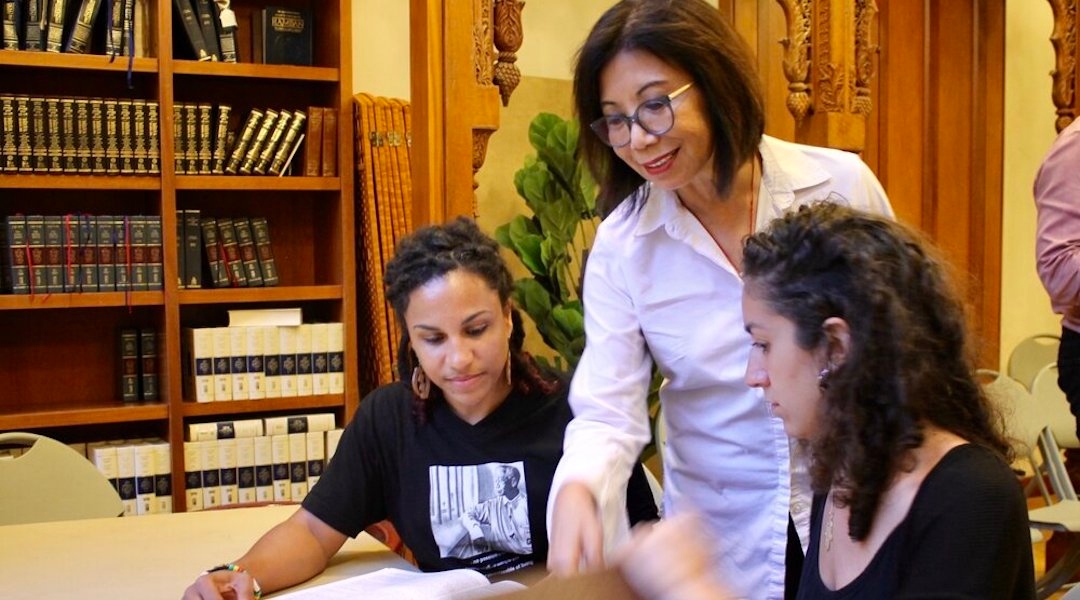
Rabbi Mira Rivera, center, said that when she joined synagogues after she was married, she struggled to find other Jews of color to unite with. (Courtesy of Ammud)
Last summer, Camp Newman in Santa Rosa, California, organized a mediation after a few white teens made a game out of trying to stick pencils in a Black camper’s hair without her noticing, according to Smulewitz. JOCs shared their personal stories, which included programming that he helped lead.
When asked about the incident, URJ’s Executive Director of Strategic Innovation and Program, Michelle Shapiro Abraham, declined to disclose any specific information. In an email she wrote that: “We understand and embrace the diversity of our Jewish community and are very focused on making sure everyone feels like they belong.”
Another thing that helped Smulewitz feel more comfortable at NFTY was the affinity groups he joined at L’Taken, a social justice seminar held in Washington DC. It was, however, to acknowledge that you are a “minority within the minority.”
“It makes me sad to know that there are people that are scared to come out and say that they are a Jew of color instead of just blending in with everyone else.”
Synagogues are also striving to include teen JOCs in their programming. Although Romemu and Central Synagogue, both in New York, don’t currently have programming specifically tailored for teens, they are making efforts to expand and include more teens of color.
Romemu is working with IKAR, a synagogue in Los Angeles that helps organizations and synagogues introduce more strategies to enhance their inclusivity.
According to Susan Brooks, human resources and operations manager at IKAR, “a lot of Jews of color are not affiliated with synagogues or Jewish organizations because in the past, they have not necessarily felt welcome,” making it difficult to get a good turnout. Being welcoming is the first step, Brooks said, to attracting a diverse group.
Gulienne Rollins-Rishon, racial justice specialist at the United Synagogue of Conservative Judaism, said that within programming, JOCs sometimes “end up feeling like collectors’ items,” because they are often treated as tokens by organizations that want to demonstrate their diversity: “Like, how many Jews of color [do] we have here?” Rollins-Rishon said that people, especially teens, need to be able to define and own their identities.
“We need to create not only the space for Jewish teens of color to come and see that they’re being represented and reflected, but also [for them to think], I’m so glad that’s there because it means that I know I’m welcome here and I’m included here,” she said.
As a Black Jew, Rollins-Rishon has dealt with jarring experiences, such as when she was refused access to a Hanukkah party during her freshman year of college because the Hillel liaisons told her the room was reserved. They “literally tried to turn me away,” she said.
Now as an adult, her mission is for this not to happen to others. She said, “Now it’s my torch to carry to make sure that kids don’t have to run up against that wall as much.”
JTA has documented Jewish history in real-time for over a century. Keep our journalism strong by joining us in supporting independent, award-winning reporting.
